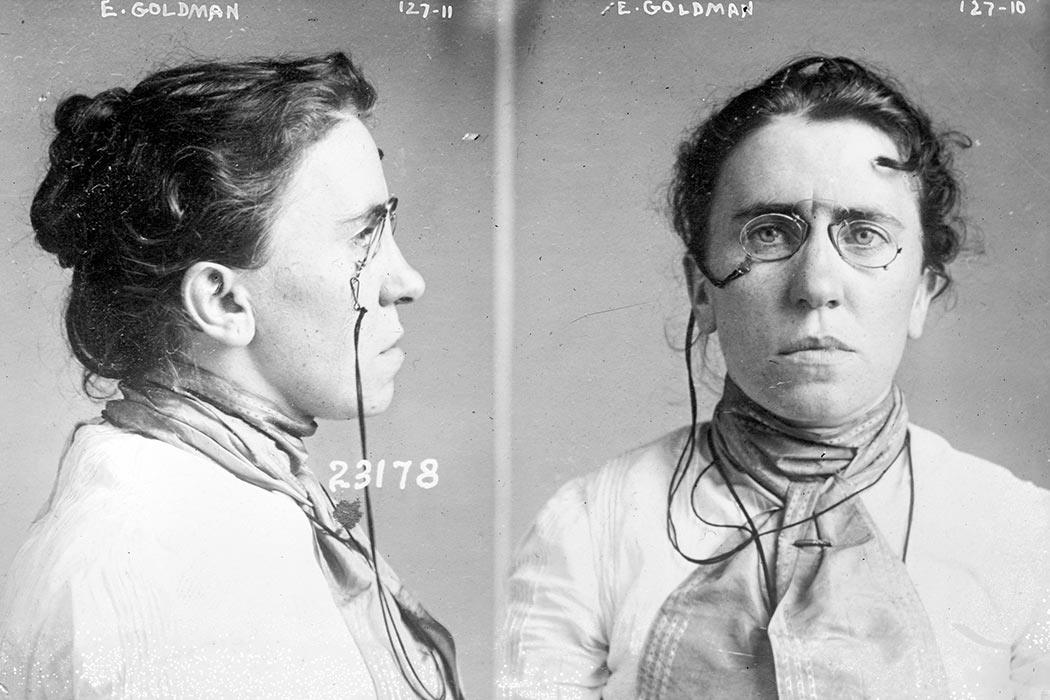On February 11, 1916, Russian-born activist Emma Goldman was arrested in New York City. She was about to give a lecture on family planning. Such talk was considered illegal under the 1873 Comstock Act, which banned “obscene” literature, including information about contraception. This was not the first time Goldman was arrested, nor the last.
So dangerous did the U.S. government find Goldman that she was stripped of her American citizenship and deported to Russia in 1919. This was after she had spent two years in prison for campaigning against the drafting of young men for war. In Russia, she grew disenchanted with the Bolsheviks and wrote one of the first damning appraisals of them. Though she spent the rest of her life abroad, she longed to return to the U.S. She did, after being issued a temporary visa, return for a brief visit in 1934. But it was only after her death, in 1940, that her wish was finally granted: her body was buried in Chicago next to the “Haymarket martyrs.”
Oz Frankel detailed how “Red Emma,” the anarchist and all-around rabble-rousing enemy of the state, became an American icon, a process abetted by the very state that originally expelled her as a threat. Her posthumous career, he wrote, was “an incredible journey from the militant fringes of the extreme Left, from exile, to a safer place approaching the political center or, if you wish, the Americanization of the un-American.”
Initially, this was done by de-fanging Goldman’s past. For her 1934 visit to the U.S., she was marketed as a humanitarian and idealist. She was no longer the preacher of free love but a married woman returning to promote her autobiography. One condition of her three-month visa was that she could not talk about current political affairs. Frankel likened the process to bleaching Red Emma into plain old Emma, a grandmotherly figure with a lively past.
Once a Week
Then in the 1960s, the New Left rediscovered her radicalness. In the 1970s, feminists took her up as a forebear. A quote attributed to her, “If I can’t dance I won’t take part in your revolution,” became a touchstone. Academia adopted her in the 1980s, and the Emma Goldman Papers project was supported by universities, foundations, and even the federal government.
Today Emma Goldman is in the pantheon of great American individualists, with T-shirts and coffee mugs to prove it. But what Frankel called “the radical and tamed Goldman” cohabit together uneasily. Perhaps the last word should be given to Goldman herself, who said when she returned to America after 14 years of exile: “I was always considered bad, my friends, but now I am worse.”







